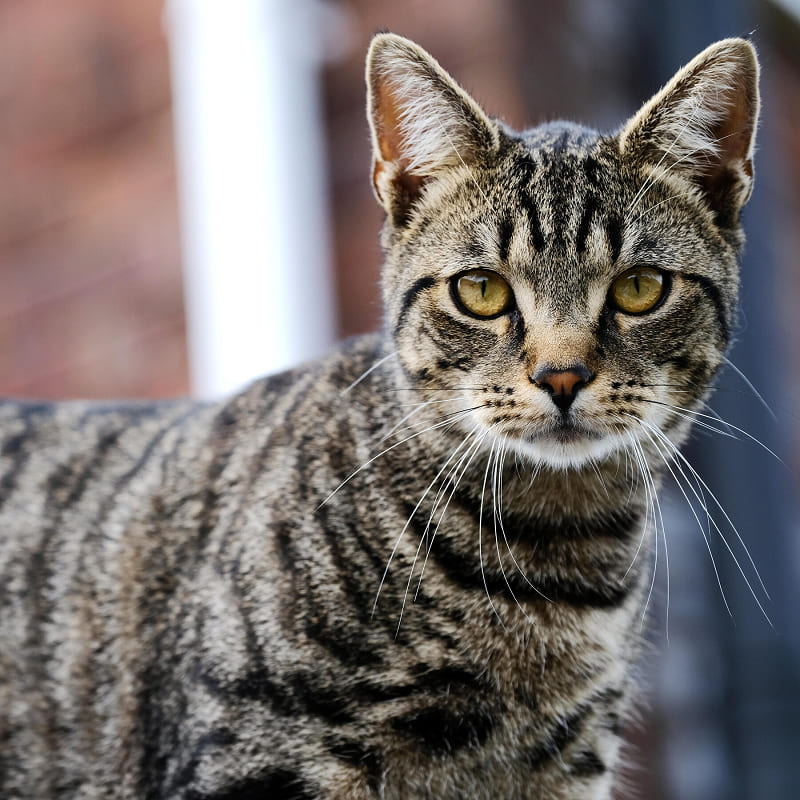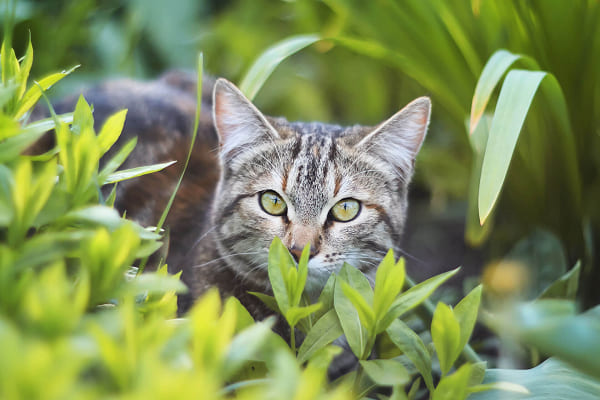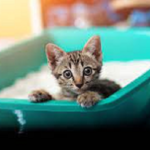Some folks may be new to living with an adult cat but decided to bring one into the home for the first Perhaps you adopted an adult because you prefer knowing the cat’s adult temperament, a stray decided wandered into your life or you somehow inherited one.

This article reviews what you will need and what to expect
Each cat has their own preferences for almost everything in their world, and it’s a learning process for you to find out what those preferences are.
Cats are more discerning than dogs and have their likes and dislikes. It won’t take you very long to learn your cat’s preferences.

Indoor vs Outdoor
One of the first decisions you will need to make is whether or not you are going to allow your cat outside or if the cat will remain inside at all times.
Keep in mind, if a stray followed you home and is used to being outside, it is hard and takes a lot of work to make the cat indoors.
That said, indoor-only cats are safer because they don’t get hit by cars, have fights with other animals, or become prey to both animals and people.
Both a previous outdoor cat as well as an only indoor cat need enrichment efforts to be happy and manage weight control.
Cats are designed to hunt, so left indoors they require things to do as well as things to manage weight gain.
Cats that go indoors and outdoors still need their indoor basic needs met, such as hiding spaces, resting areas, vertical spaces, etc.
The choice should be made balancing potential dangers outdoors against possible boredom and weight gain indoors.
You can take indoor cats outside for walks on feline-specific harnesses and leashes.
The day the cat comes home, you will need the following.

The things you must have for a cat are food, a food dish as well as water and a water dish as well as a litter box filled with litter.
Initially, you can use any bowl for water and food, but eventually you can switch to specific cat dishes as well as puzzle toys that slowly release food as your cat works to get the food pieces out.
Real cat food is necessary (dog food does not have enough protein and does not contain enough of the amino-acid taurine for cats).
But for an overnight stay until you can purchase cat food, dog food is fine.
If you know what your cat was eating before arriving at your house, use that same food. If you’d like to change to something else, mix the two foods together, gradually increasing the percentage of the new food over a 5-7 days.
If you have no clue what the cat was eating, then any new cat food will have to do. Cats are obligate carnivores, meaning they must have a meat-based diet.
Cats break down protein to meet their blood sugar requirements, not the carbohydrates that people use.
The overall quality of your cat’s nutrition can usually be seen in your cat’s health; spending more on good quality food usually translates to fewer veterinary bills.
Cats also tend to do better with canned diets, so this is preferable if your cat will tolerate it.
Litter Boxes and Litter
The litter box and litter will make more of a difference in how well your cat adapts to your household than anything else you provide. Note that these are two items, not one: a box and litter, both of which come in numerous types.
Research tells us that cats prefer much larger litter boxes than what are sold in pet supply stores, and veterinary behaviorists recommend something like a concrete mixing tub found at hardware stores.
For one cat, have two boxes in different locations. Some cats like the boxes to be on different floors, or at opposite ends of the house.
Most dislike having them adjacent to the washing machine and dryer, and they really don’t want it near their food bowls.
Older or overweight cats may have difficulty walking up and down stairs or jumping up to litter boxes placed on higher surfaces.
Each box should be scooped clean once or twice every single day, and the litter in it should be replaced every one to two weeks.
When you are replacing the litter, wash the empty box with a detergent and make sure it’s dry before new litter is put in it.
While it can be tempting to delay scooping or cleaning the box, don’t. Just don’t. Cats are fastidious and prefer clean areas to urinate and defecate in.
Dirty boxes contribute to behavioral problems in which cats decide to eliminate outside of the box.
Your first decision about litter is clumping or non-clumping. Clumping litter means the urine ends up formed into a sort of ball that is easily scoopable.
Non-clumping litter tends to be clay, which some people prefer because of the way it absorbs odors. Cats also seem to prefer non-clumping clay litter.
Clay, non-scented litter is best. Cats can have an aversion to wood, cedar, and the litter pearls.
There is scented (to cover up the smell for your nose), unscented (because some cats don’t like the fragrance), lightweight (more uses per bag), dust free (if either of you have respiratory issues), natural (biodegradable and renewable sources such as corn, wood, pine, wheat, recycled paper products, etc.) and flushable (check your local ordinances first, as some cities do not allow flushing).
There’s even litter for cats who don’t like to use the litter box, which has an herbal attractant.
Items you will need eventually, but do not have to have on Day One.
An ID tag is always a good idea so that your neighbors will know your cat is not a stray, although cats can get hung up on them.
Even a collar alone will show that this cat is not likely to be a stray. Consider microchipping your cat as well so if they are found and taken to the shelter you can easily be reunited.
Only 2% of cats taken to shelters without an I/D or microchip are reunited with their people and a microchip can greatly improve those odds.
In the United States, rabies vaccination requirements for cats vary from county to county. Ask your veterinarian what the rabies vaccination requirement is where you live.
Even if not required by law, vaccinating outdoor pets against rabies is always a good idea. Once your cat is vaccinated, place the rabies tag on the collar or harness with the ID tag and city license, if a license is required by your municipality.
Make sure to get a collar specifically for cats that has a breakaway feature so your kitty won’t get stuck squeezing through tight areas or climbing trees.
Unless your cat arrived as a stray or in a cardboard box, you may already have a cat carrier, but if you don’t you will need one.
Your cat will have to go to the veterinarian sometimes, or you may need to evacuate your home in an emergency.
There are many types of carriers: some open in the front, or on top, or both, some come apart, and so on. You can train your cat to accept it.
A scratching post or scratcher box is useful because you don’t want your cat scratching your furniture.
When the carpet or scratching surface is frayed or worn out you will need to replace it with another one.
Scratching is a natural behavior for cats and cannot be eliminated, so it’s best to direct the cat to scratch on something of your choice. Clipping nails and flexible nail tips can be beneficial.
If your cat has a long-haired coat, you absolutely must have tools to brush it or it will mat, causing skin irritation and an eventual need to be groomed (usually done very short as a lion cut with a clipper).
Long-haired cats should have a brush, a comb, and a detangler. Most dog groomers do not accept cats for grooming, and many sensitive cats need to be sedated at the veterinarian’s for clipping.
If your cat has a short coat, a comb and brush will still be needed, just not as often and likely without the difficult consequences of matting.
Your cat may enjoy a cat bed, and some use them more than others. Cats will nap anywhere they feel like it, usually in a warm place such as a spot of sunshine, your lap, on top of your laptop.
They may decide that a certain spot on the couch is theirs, which may or may not work for you.
Most cats love cat trees. They like climbing the carpeting, hiding in them, looking out the window from the highest part, and slapping around the parts that hang down for that purpose.
Place it by a window for your cat’s enrichment. Remember to vacuum the hair off from it, and descent it once in a while so it doesn’t start to smell.
Some cat toys will be left untouched while the cat has a fantastic time whapping around the plastic cap to a bottle or the ring that attaches the cap to the bottle.
Pieces of crumpled up paper, pen caps, and so on work as toys. Toys that engage you with your cat are usually appreciated, such as a feather attached to a plastic fishing pole.
With cats, you never know what they prefer until you try it. Some cat owners find that anything they purchase that is designed for cats is ignored, and that the cat will decide what is interesting to play with.
Toys are what the cat considers to be a toy, not you. Be careful not to give them string, yarn, or ribbons because those can become a linear foreign body that must be surgically removed.
Toxins
Many substances are toxic to cats and learning what they are may help your cat live a longer life.
While many people know how dangerous antifreeze or rodenticides are, items such as ibuprofen, naproxen, aspirin, mosquito repellant, nasal decongestants, cannabis, glow sticks, and many flowers found in bouquets – especially lilies, are toxic to cats.
If you suspect your cat has ingested any of these items, call your veterinarian or a pet poison hotline and ask if you should bring your cat in.
Cats cannot metabolize ibuprofen and other NSAIDs the way people do. Do not give any medication, over the counter or prescription, to your cat without discussing it first with your veterinarian.
The ASPCA has a list of plants that are toxic specifically to cats.
Easy Keepers
As long as you keep the litter boxes clean and long-haired cats brushed, cats are the easiest of easy keepers.
Your life is not ruled by their bladder, they don’t need to be walked, you don’t need to disinfect a cage or aquarium, you don’t need to go to an expensive specialty store for their food, they don’t mind being alone for a while, and when they want to be with you, they are with you in spirit and soul.
Few aspects of life are as wonderful as a happy cat in your home, purring on your lap.
Toxic Substances for Cats
Cats are a different species, so some things we can eat or ingest may essentially poison them. If you know what your cat has ingested, you can call the ASPCA Poison Control Center for a fee, at (888) 426-4435.
- Alcohol
- Antifreeze
- Caffeine
- Cannabis
- Chocolate
- Cigarettes, nicotine, e-liquid for electronic cigarettes
- Dishwashing liquid, detergent/dishwasher tablets
- Fabric softener sheets
- Grapes and raisins
- Ibuprofen and naproxen
- Lilies
- Liquid potpourri
- Minoxidil (Rogaine)
- Mosquito repellant with DEET
- Nasal decongestants
- Onions, garlic, chives
- Pesticides and rodenticides
- Topical medications
- Wild mushrooms
- Yeast dough


